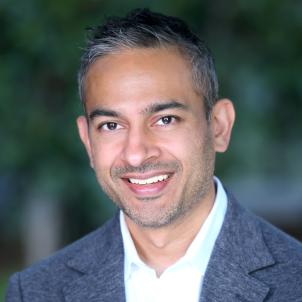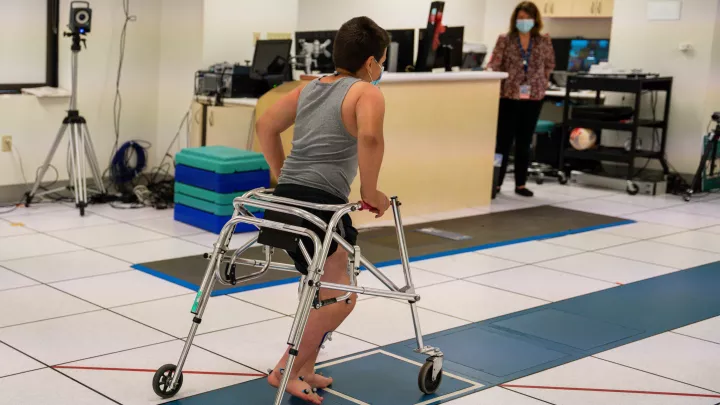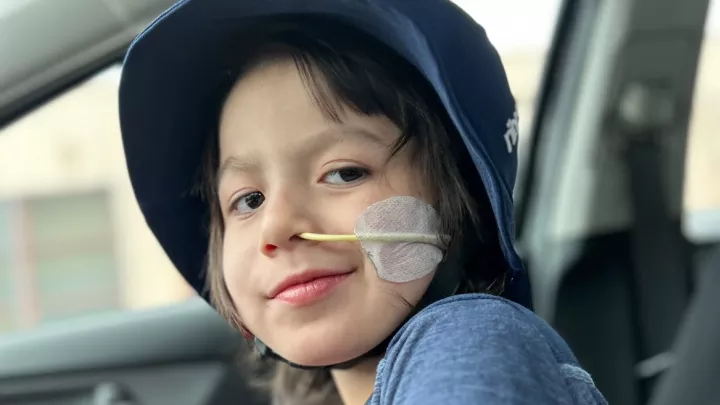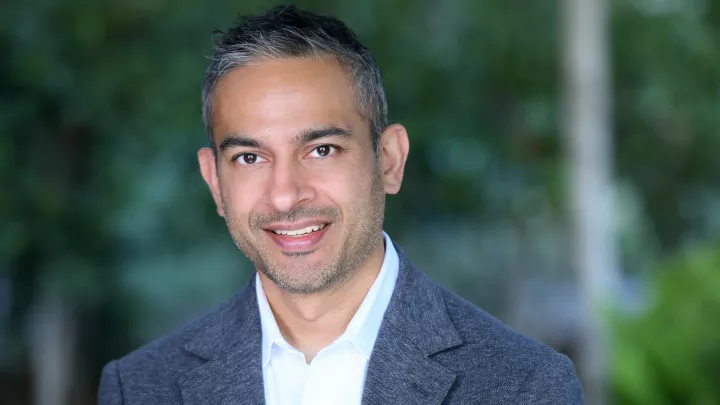
What Is Selective Dorsal Rhizotomy? A CHLA Neurosurgeon Describes the Procedure for Children With Cerebral Palsy
Cerebral palsy is a term used to describe a group of related neurological disorders caused by a brain injury during birth that affects an individual’s movement and posture. The variety of symptoms and treatment options for these disorders is vast. For some children with cerebral palsy, a major symptom is muscle spasticity, or increased muscle tone, which can result in stiffness. This frequently affects their ability to walk.
Medications, walkers, braces, and physical therapy can be used to improve mobility for some patients with spasticity. For others, a surgical procedure called selective dorsal rhizotomy (SDR) can be the most effective option. The procedure involves cutting certain sections of the nerves that are connected to tight muscles in order to relax the muscles and improve mobility.

CHLA neurosurgeon Virendra R. Desai, MD, Surgical Director of the Comprehensive Epilepsy Center and the Movement Disorders Clinic, and Co-Director of the Pediatric Neurosurgery Fellowship in the Neurological Institute, describes when and how SDR is performed, how it benefits patients, and why families might consider this procedure.
When might a child benefit from selective dorsal rhizotomy?
Understanding when SDR is a viable option begins with determining the patient’s mobility. “There are two types of movement disorders that we see in relation to cerebral palsy: spasticity, which is consistently stiff or tight muscles, and dystonia, which is involuntary, repetitive muscle contractions,” Dr. Desai explains. “We can only use the SDR procedure on people who have spasticity alone, as well as a certain level of mobility.” Both spasticity and dystonia can appear very similar, which is why assessing a child’s candidacy for SDR takes a comprehensive, in-depth evaluation by an experienced team such as the one at CHLA.
Dr. Desai and his team, including Chief of Rehabilitation Medicine Kevan Craig, DO, and Assistant Medical Director of the Movement Disorders Clinic Quyen Luc, MD, conduct a full workup of a patient’s brain, as well as a gait analysis study in CHLA’s Motion and Sports Analysis Lab. They use a numbered scale called the Gross Motor Function Classification System to grade a patient’s functional level. Additionally, CHLA physical therapists will perform several other important evaluations to help guide decision-making.
Some patients with spasticity are only able to walk a short distance before getting tired, and physical therapy, braces, walkers, and muscle relaxants are not working well for them. These are the patients who would benefit from SDR. “The procedure can’t take somebody who is not able to walk and give them the ability to walk, but it can help someone who is able to walk 10 feet and enable them to walk 1,000 feet without getting tired,” Dr. Desai explains. The ideal age range for patients undergoing SDR is 3-10 years old, but in select cases the surgery can be performed for an older child.
Virendra R. Desai, MD[The procedure] can help someone who is able to walk 10 feet and enable them to walk 1,000 feet without getting tired.
How does the selective dorsal rhizotomy procedure work?
The procedure, which was developed through decades of research, involves making small cuts to specific sections of nerves to relax tight muscles.
The nervous system consists of many neurons, or nerve cells that send and receive electrical signals. Muscle spasticity is caused by unchecked activity in the nerves over-activating the muscles. The reflex arc in muscles involves a signal traveling up the sensory neuron from the muscles to the spinal cord and then back down the motor neuron to the muscle. By interrupting this reflex arc, Dr. Desai’s team is able to decrease the spasticity, enabling children to better control their legs, walk further and longer, and feel less pain.
This is where SDR comes in. “We target the sensory neuron, which is also called the dorsal nerve,” Dr. Desai says. “But we don’t cut the entire sensory nerve root, just a small piece of it that corresponds to which particular muscles are tight and how tight they are.”

After the patient is sedated, Dr. Desai and his team make an incision in the patient’s back to access the nerves. They use an electrode to stimulate specific sections of certain sensory nerves and observe the response in the patient’s muscles to confirm they are targeting the correct areas and to establish the section of each nerve that requires attention. Next, they cut the relevant nerve sections and then close the incision.
The patient will spend a few days in the hospital to recover. They might immediately notice that their muscles are more relaxed and less painful than before, and that they have a greater range of motion.
What happens after the selective dorsal rhizotomy procedure?
After recovering for a few days, patients will begin four to six weeks of inpatient rehabilitation at CHLA. They will then move on to a full year of outpatient physical therapy, coming into the hospital two or three times per week for sessions.
“They are relearning how to walk with their newly expanded range of motion,” Dr. Desai explains.
Why should a parent consider the selective dorsal rhizotomy procedure for their child?
There are two main options for treating a cerebral palsy patient who has spasticity and is unable to walk far. One is SDR, and the other is a baclofen pump, which is surgically implanted near the spine and delivers a muscle relaxant medication to the spinal cord.
“The downside of that is that the pump has a high infection rate, and patients have to keep coming back to the hospital every three to six months to have the pump refilled,” Dr. Desai explains. “In contrast, SDR is a one-and-done procedure, and the patient is then set for the rest of their life.”
For parents whose young children with cerebral palsy are able to move around fairly well, with frequent rests, Dr. Desai explains that their bodies are still growing. “When the child becomes an adult—larger and heavier—and still has muscle spasticity, they may not be able to walk; SDR performed at a young age can preserve the ability to walk for a longer time period as the child gets older, which is another good reason to opt for this one-time procedure.”
Dr. Desai also emphasizes how CHLA is particularly well-equipped to carry out SDR. “We have a Motion and Sports Analysis Lab, which is relatively rare among hospitals. So we are able to analyze a patient’s gait in-depth and determine if they would benefit from this procedure.” He also mentions CHLA’s robust inpatient rehabilitation program, which includes dedicated physical therapists who are accustomed to working with SDR patients and are key to the surgery’s success.
Additionally, Dr. Desai's team has a combined 10 years of experience performing SDR, and they launched a new Spasticity Clinic in January 2025, which is led by neurologist Dana O'Rourke, MD, and is focused on supporting patients with movement disorders. “We have tons of experience with these disorders and are ready to help,” Dr. Desai says.


